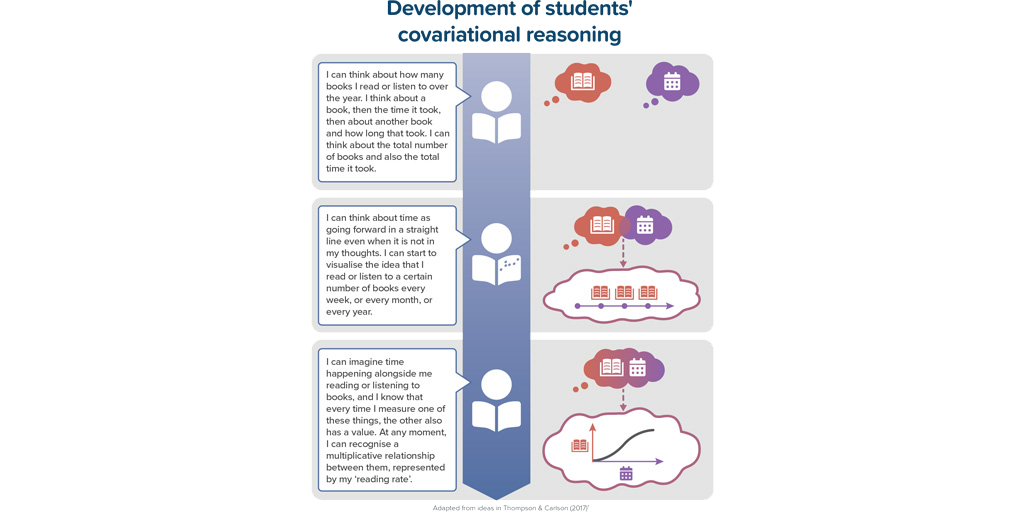30 October 2024

What does research suggest about covariational reasoning?
- Covariational reasoning can be explored across the breadth of mathematical activity from early primary onwards
- Students can be given opportunities to develop covariational reasoning through exploring linear functions and rates; making and critiquing statements; and considering association, correlation and scatter plots
- Focusing on plotting or comparing pairs of values may limit opportunities to develop covariational reasoning
- Covariational reasoning in statistical contexts requires students to also coordinate the idea of signal and noise, and this can be challenging
- It may be beneficial for students developing covariational reasoning to use either time or a counting sequence of numbers as the second variable
- Exploring covariation through multiple representations is important; students may find it easier to use graphs at first, especially non-standard ones
- Useful activities might include highlighting fallacies and misconceptions, using modelling, and using real data and/or familiar contexts
- Software tools can be used to support students’ exploration of covariation by allowing more time to focus on exploring patterns
View Espresso